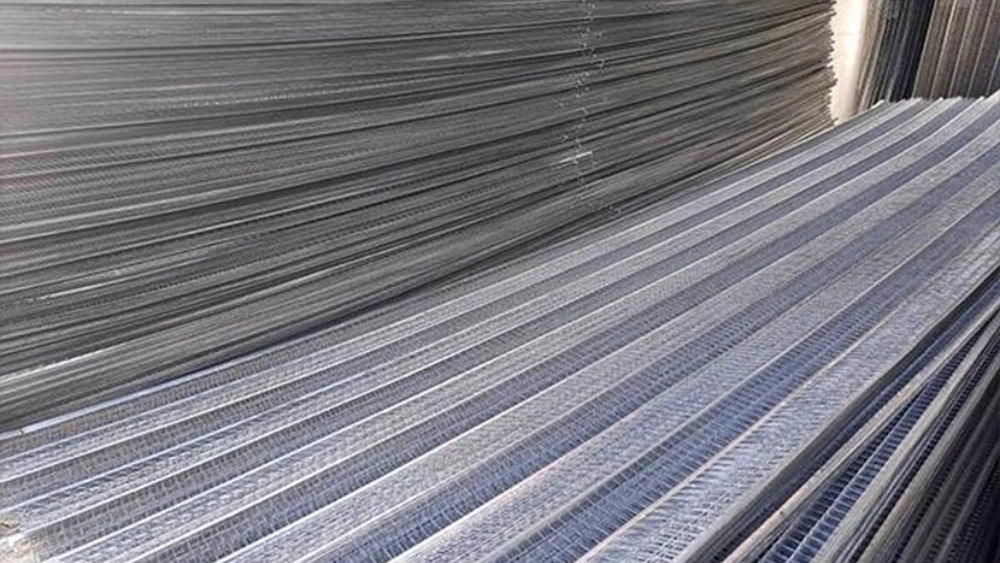Ceiling and wall rabits
Rabbits is one of the most popular materials in the construction industry, which has a special place in the construction of facades, false ceilings, walls and interior decoration of structures. In fact, it is suitable for creating a space for installing electrical equipment and lighting systems in buildings. This product is produced with a different process on galvanized sheets.
What is Rabbits?
Rabbits are very popular in the construction industry, where they are used as plasterboard reinforcement meshes and flooring meshes. Rabbits are widely used in the construction industry and are very durable and highly resistant to corrosion. These features make Rabbits an excellent choice for any construction project. Many types of rabits, which determine its price, can be seen in the false ceiling. Galvanized steel shows high resistance in different conditions and this makes this product suitable for production. This steel product is widely used in decorative, repair and decorative works and is often used to create continuity in wall surfaces. in such a way that every separation and gap covers the wall. Regarding the rabits, you should know that these widely used materials have different types and the material used is not limited to steel and polymer materials can also be used to make these materials.
Types of Rabbits
This steel product, like all building materials, has different types that can be classified based on column, weight and spring. If you are planning to do rabits work in your building, you should get the help of a rabits work or Ravizkar. He determines what rabits and at what weight to buy.

Types of Rabbits based on column
Rabbits are usually produced in different columns based on the type of need. In Iran, rabits are used with the number of columns 9, 11 and 13, each of which has a different application in the construction industry. The number of Rabbits columns is also called Rabbits bridge. Of course, there are also 17-column Rabbits, but they are common in other countries and are not in great demand in Iran. 13-column Rabbits are of higher quality and have a higher price than other types, and they have special uses. For this reason, when buying Rabbits, you should make sure that the purchased type corresponds to the consumer product and the size of the work. Sometimes, to increase the speed of work, instead of 9 light columns, 13 columns are used in the false ceiling, which, in addition to being non-standard, also costs more. But in ceiling plastering, the 13 heavy column type is more useful and it is used in the facade of the building, because it must bear the weight of the stone facade. The variation in the number of Rabbits columns is due to its many uses and has nothing to do with the price. . Its price is determined based on weight and thickness, and the number of columns is not important. For example, the extra-heavy 9-column type may weigh more than the 11-column light type and thus be more expensive.
Types of rabbits based on weight
The sheet used for production can have different thicknesses and the thicker the sheet, the heavier the product. Therefore, each sheet of Rabbits has a different weight (light, semi-heavy, heavy, and extra heavy) according to the manufacturer's sheet, which has a direct effect on the price of Rabbits. Be careful, it cannot be said that the higher the weight of the rabbits, the better. In fact, the price of galvanized sheet has a direct effect on the rate of the rabits made from it.
In cases where this product is used for false ceiling, its weight is not very important, and for this reason, it is usually used in its light type. will be The use of heavy type in the false ceiling, in addition to imposing more costs, makes the work more difficult. In the false ceiling, because more flexibility is needed, 9 light columns are a good choice.
Types of Rabbits based on springs
In addition to weight and column, rabbets can also be classified based on the openings between the columns or the number of springs. There are two types of production rabbets available in the market, two or three springs. The fountains between the columns can have different shapes such as rhombus, square and parallelogram, which is the only common production and use of Rabbits with parallelogram fountain in Iran. The more springs there are, the smaller their dimensions are. What the spring does is absorb energy. In order for the amount of energy absorption to be balanced, they consider the optimal size for the springs, which is the angle of the springs.

